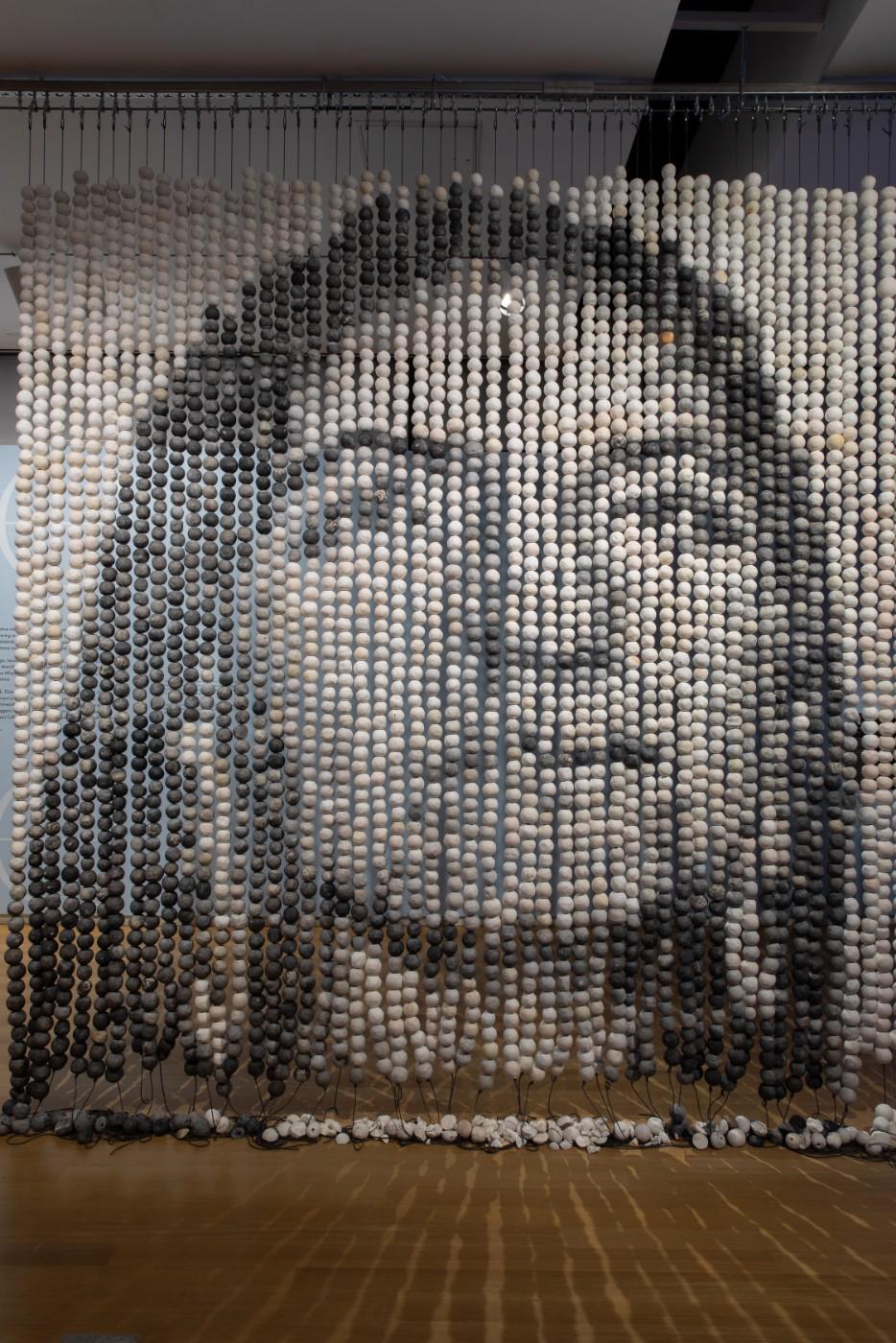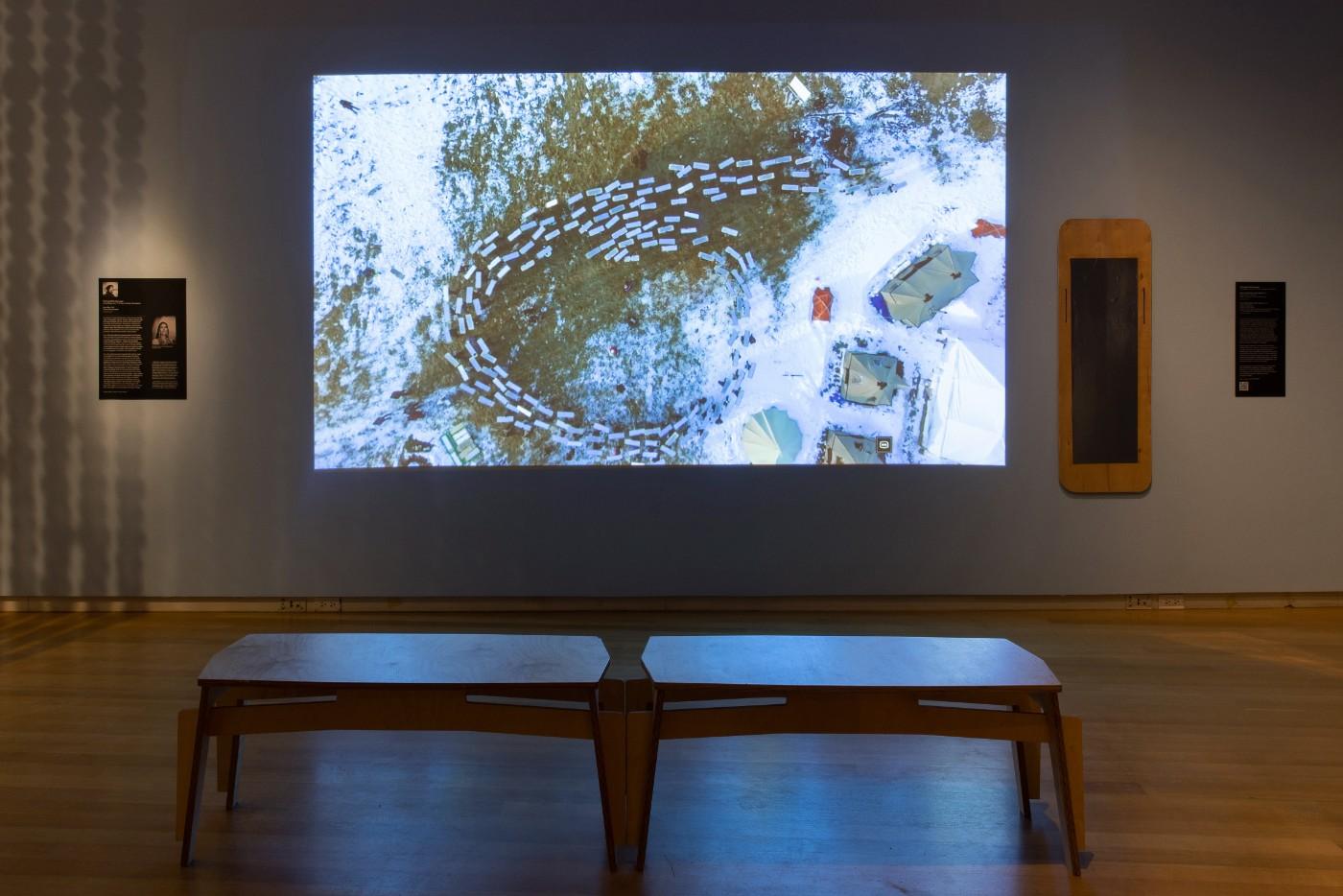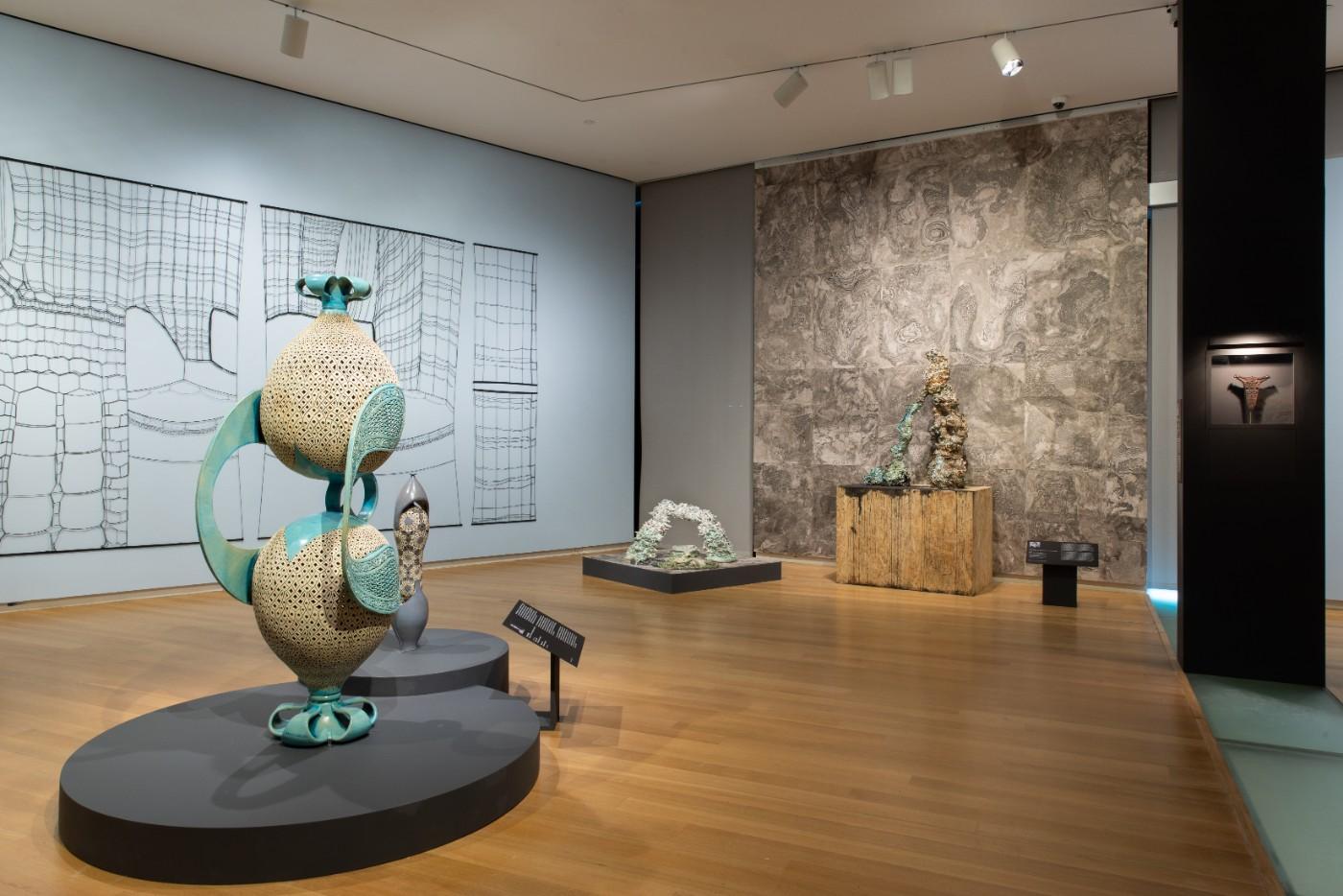In conjunction with the award, MAD is featuring works by Luger and his fellow finalists in the exhibition The Burke Prize 2018: The Future of Craft Part 2, on view through March 17, 2019. The exhibition includes thirty-five works, ranging from jewelry to installation, furniture, and digital media. Representing nine states and thirteen cities across the United States, the winner and the fifteen finalists comprise an ethnically and racially diverse group with an equitable gender breakdown. The Burke Prize and exhibition continue the Museum's founding mission of championing artists working in craft media and methodologies, bringing attention to the breadth and variety of work being made by young artists nationwide. The 2019 Burke Prize application period will open on November 7, 2018.
CANNUPA HANSKA LUGER
United States, born 1979; lives in Glorieta, New Mexico
Cannupa Hanska Luger is a multidisciplinary artist of Mandan, Hidatsa, Arikara, Lakota, Austrian, and Norwegian descent. Through monumental installations that incorporate ceramics, video, sound, fiber, steel, and cut paper, he interweaves performance and political action to communicate stories about twenty-first-century indigeneity. Luger has exhibited internationally at venues such as the Nathan Cummings Foundation, New York; Washington Project for the Arts, Washington, DC; Art Mûr, Montreal; the Museum of Northern Arizona, Flagstaff; Galerie Orenda, Paris; the Autry Museum of the American West, Los Angeles; and the Center for Civil and Human Rights, Atlanta. He lectures and participates in residencies around the globe, and his work has been collected internationally. Luger holds a BFA in Studio Arts from the Institute of American Indian Arts and was a 2016 Native Arts and Cultures Foundation National Artist Fellow.
ABOUT THE 2018 JURORS
Michael Radyk is the Director of Education for the American Craft Council and Editor in Chief of the journal American Craft Inquiry, as well as an artist who has focused his practice on both industrial and hand weaving. Radyk received his MFA from Rhode Island School of Design and developed his interest in education while studying at RISD and Brown University's Sheridan Center for Teaching and Learning. He has spent the last ten years exhibiting his work, producing both handwoven and jacquard textiles and sculptures, and teaching at various institutions. His approach incorporates and reflects multilayered sources of inspiration, meaning, metaphor, and research. Radyk's work is included in the textile collection of the Cleveland Museum of Art, and he has exhibited throughout the United States and internationally. Upcoming shows include the 2019 invitational biennial exhibition at the International Fiber Art Fair, Seoul Arts Center, South Korea.
Jenni Sorkin is an Associate Professor of Contemporary Art History at the University of California, Santa Barbara, who writes on the intersection between gender, craft, material culture, and contemporary art. The recipient of a PhD in the History of Art from Yale University, she has been awarded fellowships from the American Council of Learned Societies, the Henry Luce Foundation, and the Getty Research Institute. In 2016 she co-curated, with Paul Schimmel, Revolution in the Making: Abstract Sculpture by Women, 1947–2016, the inaugural exhibition at Hauser & Wirth, Los Angeles. Sorkin is the author of Live Form: Women, Ceramics, and Community (University of Chicago Press, 2016), which examines American postwar ceramics practices through the lens of gender. She sits on the editorial board of the Journal of Modern Craft, and publishes and lectures widely.
Namita Gupta Wiggers is the Director of the newly launched Master of Arts in Critical and Historical Craft Studies at Warren Wilson College, North Carolina, as well as co-founder and Director of the Critical Craft Forum, an online and on-site platform for dialogue and exchange. Wiggers has taught courses on contemporary craft and theory, the history of graphic design, curating through craft, and theory of objects. As Curator and Director of the Museum of Contemporary Craft between 2004 and 2014, she curated and organized more than sixty-five exhibitions and hundreds of programs, and commissioned critical writing for online and print projects. A member of the Board of Directors of Haystack Mountain School of Crafts, Wiggers is the Exhibition Reviews Editor for the Journal of Modern Craft and serves on the editorial boards of Garland and Norwegian Crafts. She edited A Companion to Contemporary Craft (Wiley-Blackwell, forthcoming) and is collaborating with Benjamin Lignel on a research project on gender and adornment.






























